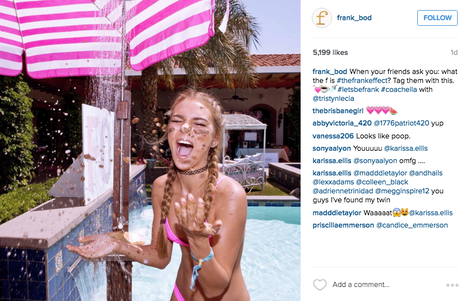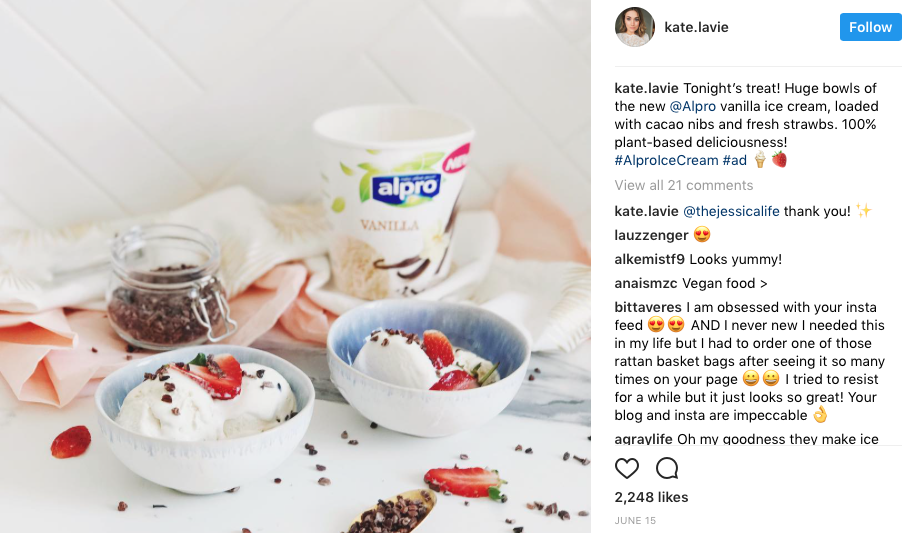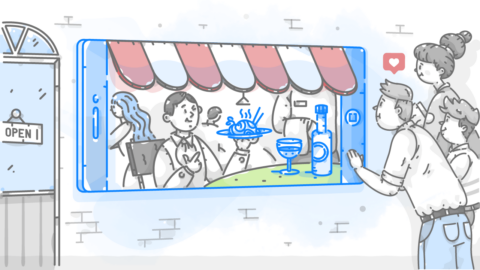Influencer marketing works because it’s subtle.
Though posts by influencers are technically advertisements, they’re don’t feel like advertisements. And that’s vitally important.
As companies like Facebook continue to fill your screen with more and more ads, consumers increasingly find ads to be a turn-off. In fact, 74% of Millennials and Generation Z report they are tired of social advertising. With all this ad fatigue it makes sense that ad-blocking, the practice of installing software such as Adblock Plus to limit your exposure to online ads, is on the rise.
Smart brands understand these dangerous trends and are responding with influencer marketing ― ads that don’t look like ads.
And they’re seeing amazing results. Some reports say that influencer marketing delivers a whopping 11x ROI over all other forms of digital media.
Influencer marketing is still very new, and the landscape is evolving rapidly. Keep reading to learn more about how you can begin experimenting with influencer marketing for your business, review influencer marketing 101 and why it matters, and finally learn the exact steps to go about finding influencers for your brand.

A Quick Review of Influencer Marketing
Instagram currently has 8 million business profiles, plus 1 million active advertisers every month. When the social media platform made those announcements in late March, they had also seen 120 million users visit a website, get directions or otherwise contact a brand within a one-month time period.
This alone is a massive opportunity for brands to reach the right people, drive awareness, clicks, and sales.
The rise of Instagram has given way to the rise of another 21st-century phenomenon: The Instagram Influencer.
An Instagram influencer is a person who has a substantial and engaged following and who will feature your products on their account because they’re interested in your brand (and they know their audience will be interested, too). Influencer marketing puts your offer in front of a targeted audience in a place where they’re already active, like Instagram. Customers trust recommendations from individuals (more so than from brands) even if they don’t personally know the person who’s making the recommendation. For most brands, the goal is to build an audience in a short amount of time for the purpose of quickly increasing sales.
Influencer marketing is particularly helpful for brands that have a small following; that don’t know if their posts are being seen by a wide enough audience; or who don’t have the time or knowhow to build a following on their own.
Brands of all sizes can harness the power of influencer marketing – look how ice cream company Alpro teamed up with lifestyle blogger Kate Lavie to promote their product. Choosing Kate was a great idea because her Instagram theme is a perfect match for Alpro.

Developing a Target Audience
Before you can find the perfect influencer to promote your brand, you need to formulate your target audience.
To create a well-rounded view of your ideal customer, take several factors into consideration, including age, gender, location and race, plus aspirations, attitudes and even social standing. The more specific you can get, the better. Analyzing your target audience can be a lengthy process but taking the time to really think about this now will pay dividends in the future.
Once you know what audience you want to target, you can seek out influencers who have the same following.
Note that your target audience may have interests on the outskirts of your primary product. For example, if you sell beauty products, you don’t want to reach out to just any beauty product influencer you can find. Think beyond your product to what your company stands for. Do you sell cruelty-free beauty products? Look for an influencer who is not just in the beauty product market, but who also promotes cruelty-free practices. You’ll reach a more targeted audience this way.
Finding Instagram Influencers is a pain in the behind!
Let us do it for you, with this exclusive offer.
For just $7 we’ll send you a custom list of 30 micro-influencers in categories such as:
Automotive
Beauty/Skincare
Cannabis
Fashion/Apparel
Fitness
Food & Beverage
Golf
Guns
Pets
Photographer/General
Swimwear
Travel
Yoga
If you’re serious about leveraging Instagram influencers to grow your business, you’d be crazy not to take us up on this.
Each list is customized to your exact requirements. Yes, we actually have a real human being go on Instagram and dig around for these people!
At only $7, it’s a tiny investment that will save you hours of work. So get it now while you can:
GET YOUR CUSTOM INFLUENCER LIST
Micro vs. Macro-Influencers
Some of the best Instagram influencers are considered micro-influencers, meaning they have between 1,000 and 100,000 followers. They’re not traditional celebrities or, in influencer marketing terms, macro-influencers. They reach a smaller-yet-highly-engaged audience within a specific niche. Micro-influencers are known as authentic, knowledgeable and passionate. They’re trusted by their audience, particularly when it comes to recommendations for what to buy.
Still, many brands opt to work with macro-influencers because they want a wider reach. Though this may work at times, there are a handful of reasons why micro-influencers may be a better option:
- Micro-influencers post less frequently than macro-influencers, making their rare posts seem more trustworthy and well-planned.
- Fewer posts don’t mean less engagement. Micro-influencers can still drive just as much traffic and sales as macro-influencers.
- Though they may still get excellent results, micro-influencers tend to charge less for a sponsored post than macro-influencers.
- Many micro-influencers will work with brands to trade a sponsored post for a freebie.
An example of a brand using micro-influencers is Loeffler Randall. This shoe company has a community of ambassadors made up of creative women in business, like Rachel Suter, the style director at Stella & Dot.

Searching for Micro-Influencers
The two best tools you can use to search for Instagram influencers are Google and Instagram itself.
On Google, search for “top Instagram accounts for…” and then enter your niche. The search results will be articles that compile the most influential Instagrammers in your niche. Play around with keywords to find more specific accounts.
On Instagram, go to the built-in search bar to look for user profiles, tags or locations. The quickest way to find an influencer is to enter a hashtag and then look at the Top Posts section to find images and users with high engagement rates.
Another strategy is to organically build relationships with influencers on social media. Learn the topical issues that affect your market, then join certain conversations with the influencers you hope to connect with. This could also help you hone your brand’s voice more as you get used to keywords and terminology that major players in your market are using.
Can you buy lists of Instagram influencers in different industries?
Absolutely.
In fact, we are selling them!
For just $7 you can buy a custom list of Instagram influencers, sourced to your exact requirements and made by someone from our team.
3 Types of Micro-Influencers
There are three basic types of micro-influencers: the fan, the niche influencer, and the local blogger.
The Fan
People who are fans of your brand are already familiar with your products and are following you on social media. To find them, look through your followers, paying special attention to keywords in their username. For example, if you sell food items for the Paleo diet, look for followers who have “Paleo” in their username. You can also see who tags you in their posts or who comments on a lot of your posts.
The best part about your fans is that you’ve already won them over. They know your company, they like your products and they may even be sharing their experience with your brand online. This is also one of the best opportunities for swapping free products (instead of money) for a promotion or review.
The Niche Influencer
This type of micro-influencer is relative to your niche market. They may not be familiar with your brand yet, but if your product will connect with their audience, they could be interested in working with you. For the holidays in 2016, Hallmark promoted the #KeepsakeIt hashtag, working with family-friendly influencers like @foxmeetsbear who shared personal, touching moments from the season.

The Local Blogger
For small, local businesses, seek out area bloggers who have a strong Instagram presence. Work with them to promote your shop’s opening or an event you’re running. Invite them to get a first look at your new store or a product you’re about to launch. Give them an “in,” then ask them to share their experience on Instagram.
Assessing an Influencer’s Content
Once you’ve found a few influencers you may want to work with, it’s time to assess their content.
First and foremost, the influencer has to be relevant to what you want to promote. They’ll need to seamlessly promote your product along with their regular stream of content. If they veer too far from what they normally promote, the post could go ignored by their audience.
Also, take the following questions into account:
- Are they posting high-quality content? Images should be well-lit, appropriately staged, expertly edited, etc. On top of that, captions should include proper spelling and grammar, beneficial hashtags and a useful call-to-action.
- Do your aesthetics match? If you need to figure out your own brand aesthetic or if you’d like something to quickly refer to as you scan Instagram profiles, create a mood board for reference. Fill a private Instagram account with curated content that reflects the type of influencer account you’d like to be part of.
- What types of content do they post? Do they mix it up with what they post on IG? Do they post mostly sponsored posts or do they prefer to offer coupon codes or run contests? Make sure that the type of promotion you want to offer matches what their audience is used to.
- Do they have the right voice? Whatever your brand voice is – fun and laid back, professional and full of industry-speak – you want the influencer’s voice to match it.
- How often do they post? If you pay for a sponsored post, how quickly will it go up? Is your post time-sensitive or seasonal? If so, timing is going to matter quite a bit.
- What type of engagement do their posts get? Are there comments from a variety of people or do most of the comments seem to come from the same few users (which could indicate the users are part of a comment pod)?
- What is their likes-per-follower ratio? Anything lower than 1% could mean that they have several fake followers.
- How responsive is the influencer? If people comment on a post that you’ve sponsored, but the influencer doesn’t respond to them to help them move along in the buying process, you could miss out on those customers.
What you offer an influencer?
Before getting any further, you will need to think about your offer to the influencers you want to work with.
What are you going to give them? What are you going to get in return?
For example, if you are a hat company, maybe you just want to give them a free hat in exchange for 2 posts from the influencer. For best results you will want to provide the influencer with guidelines on what to say about your brand — it should still feel like a natural post from them, but at the very least be sure that they tag your company’s Instagram in their captions.
Of course, you did your research on each influencer you want to work with, so you know they will like and appreciate your hats. I fashion influencer jargon, your hats “match their aesthetic.”
But if you want to work with a larger influencer, free product might not be enough. You might have to offer to pay them a fee per post. This is a negotiated rate and how much you should pay is definitely “it depends,” but we’ve found that influencers with around 10k followers typically expect to receive $50-$100 per post. The more followers, the more money you should expect to pay.

What’s the best way to reach out to influencers?
After determining which influencers you want to work with, and what you are going to offer them, it is time to make the pitch.
There are lots of different ways to get in contact with Instagram influencers. You can check out the myriad influencer marketplaces that exist, though we’ve found these to be very expensive, and probably too expensive for you if you are just starting out.
You can also look at influencer databases, like this one from Ninja Outreach. These categorize influencers into different categories such as Music, Cars, or Food. From there you can get a nice list of influencers to potentially reach out to.
You can also just ask them directly, either by sending them a direct message, or finding their email address and sending an email. This definitely works, but also can be expensive because influencers often overvalue themselves and try to charge way too much. This is especially true if they have never heard of your brand or business. The other issue with reaching out directly is that influencers have cluttered inboxes, and get pitches from brands all the time, so often your messages just get ignored.
One of the best ways we’ve found to reach influencers here at Jumper Media is to hire another influencer to do your bidding for you. First, you should get in touch with an influencer in your niche via email or direct message, and give them free product or pay them in exchange for a post or two. Build the relationship, then when they are done ask if they are interested in joining your team either on a part-time or per gig basis. That one influencer’s job would then be to reach out to other influencers.
Here’s why this works:
- Influencers often have a network of other influencers that they can tap into. This will open up more opportunities for your brand to connect with prospects.
- Influencers tend to get better rates than agencies, brands or other non-influencers. They know fair market rates and will be able to negotiate on your behalf. They also may get special pricing if they connect with influencers they already know.
- A warm lead generated by a respected influencer will be more effective than a cold message sent by an unfamiliar brand.
- They know exactly what other influencers are looking for and will be able to adapt your pitch to meet those needs.
In Review
Influencer marketing presents customers with a familiar face, one that creates a bridge between your target audience and your brand.
Micro-influencers, specifically those who promote high-quality posts on Instagram, can make a big impact on your business, and don’t cost that much (sometimes less than a business book).
If your business is investing time and energy into Instagram Marketing, then you should definitely think about experimenting with influencers. Before you start your first campaign, you’ll want to set concrete goals and be sure that you have a plan in place to measure your Influencer Marketing ROI.
Before you start working your first influencer marketing campaign, be sure to set concrete goals and measure to measure the impact of your influencer campaigns —
We know that starting an influencer marketing program from scratch can be daunting, so here at Jumper Media, we run influencer programs for brands that know they want to invest in influencer marketing but don’t have the time or manpower to figure it out. Talk with someone on our team today to learn more about our influencer marketing campaigns, social media content creation packages, and more.
Have you tried working with Instagram influencers? How did it go?


